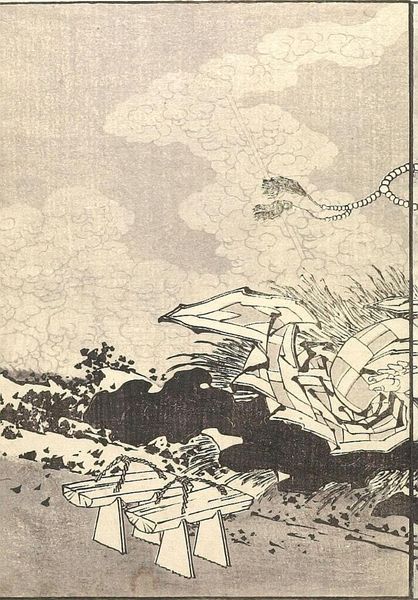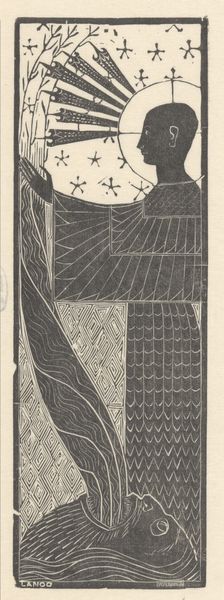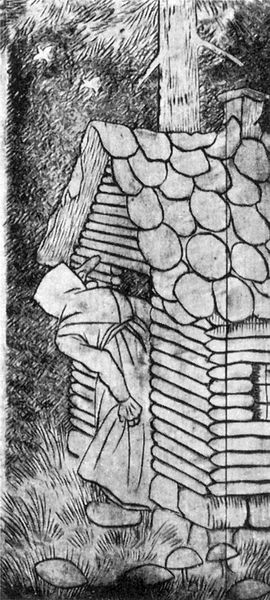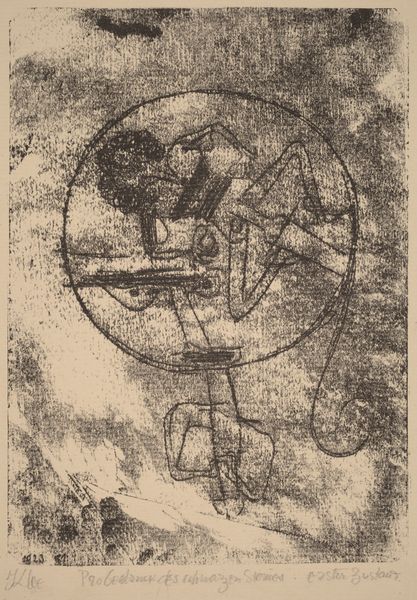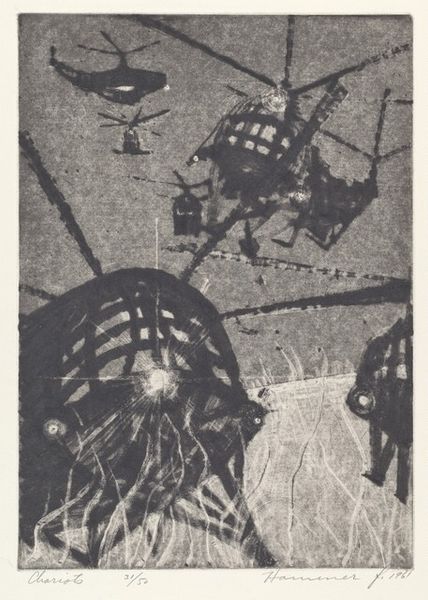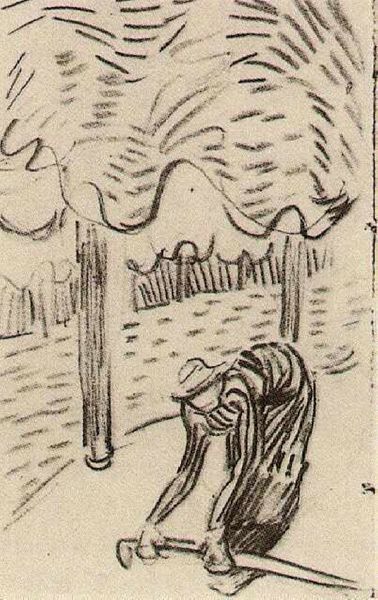
New Year's Dream of Mount Fuji, Falcon and Eggplant (Ichi Fuji, ni taka, san nasu) c. mid to late 18th century
0:00
0:00
Dimensions: Paper: H. 63.0 cm x W. 11.3 cm (24 13/16 x 4 7/16 in.)
Copyright: CC0 1.0
Editor: This print, "New Year's Dream of Mount Fuji, Falcon and Eggplant" by Katsukawa Shun'ei, seems to depict a serene scene. I'm curious about how the symbolism might have resonated with its original audience. What do you see in this piece? Curator: Well, viewing this through a historical lens, it's important to understand the cultural significance of these images. Mount Fuji, the falcon, and the eggplant were considered auspicious symbols, particularly for the samurai class. Consider how the artist is catering to societal desires for good fortune. Editor: So, it's less about personal artistic expression and more about fulfilling a societal need for symbols of luck? Curator: Precisely. The artist, working within the ukiyo-e tradition, is responding to a market demand. The political implications of imagery were just as important, perhaps even more so, than artistic intent. What do you make of the depiction of the figures? Editor: They appear to be idealized, almost like actors in a play, which reinforces the performative aspect of these symbols. It's a fascinating blend of art and social function. Curator: Indeed. Thinking about it in terms of cultural reception, this print likely offered a way for people to publicly display their aspirations and align themselves with prevailing social values. Editor: That makes perfect sense! I hadn't considered how much this artwork functions as a socio-political statement. Thanks.
Comments
No comments
Be the first to comment and join the conversation on the ultimate creative platform.



